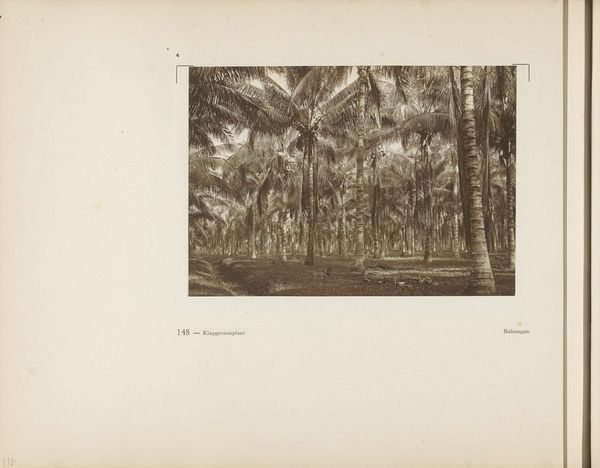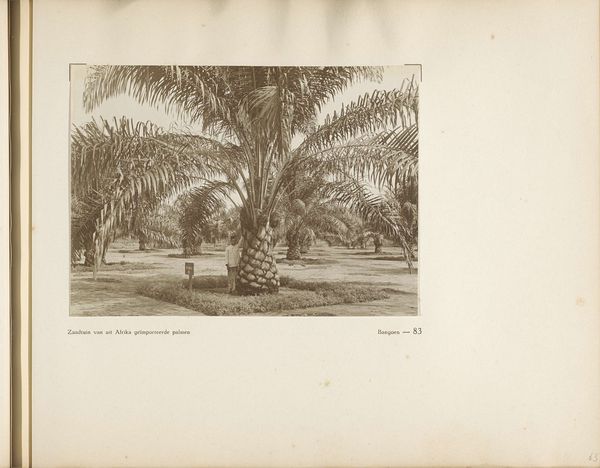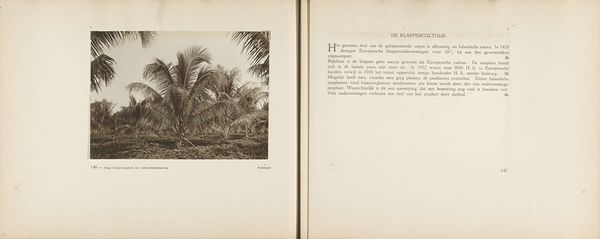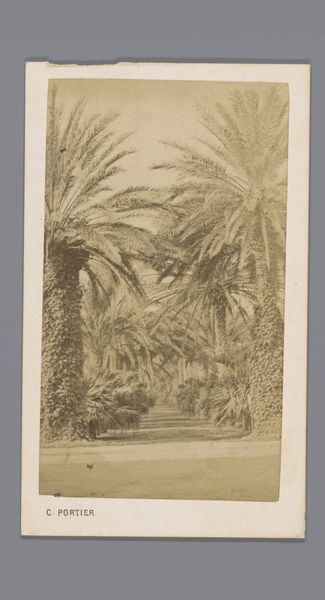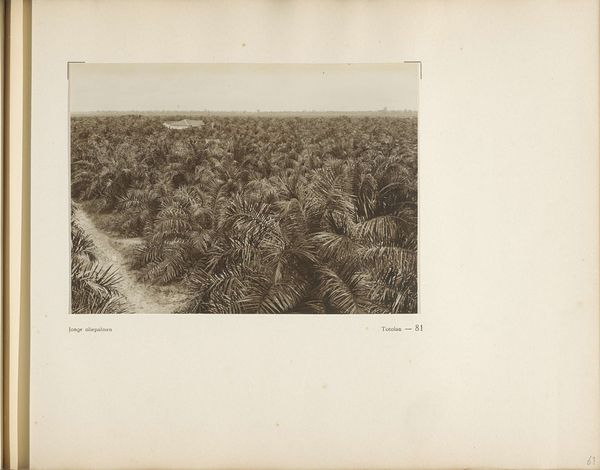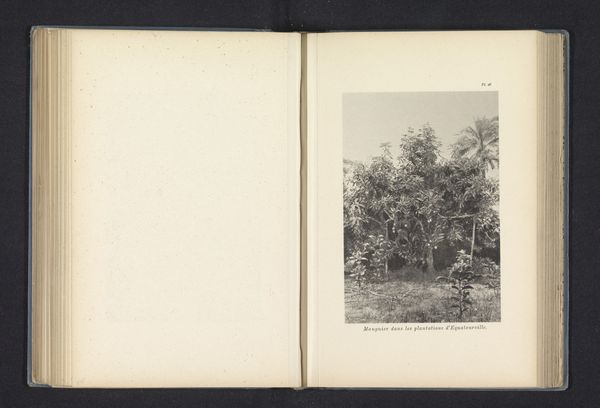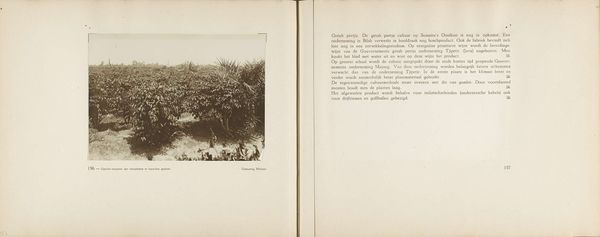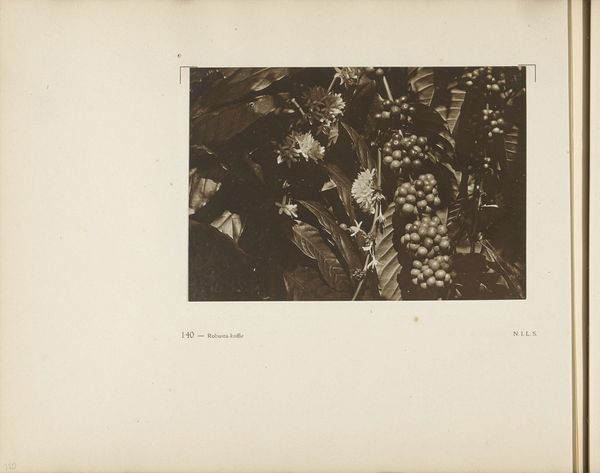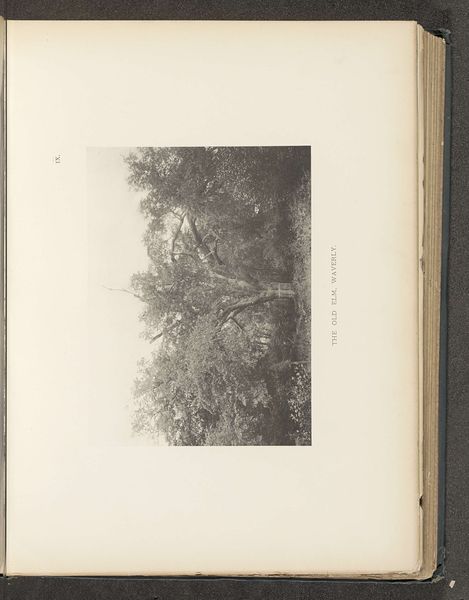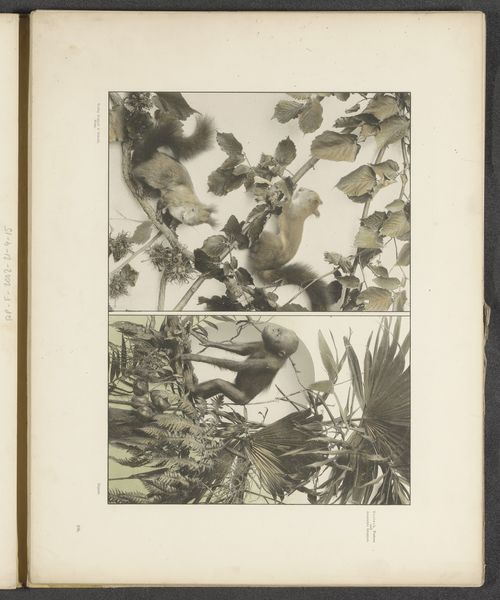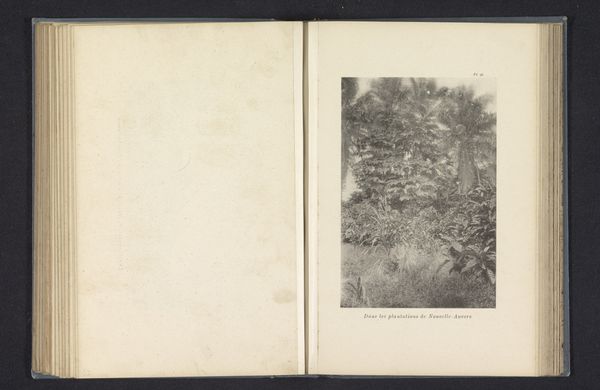
Pagina 84 van fotoboek van de Algemeene Vereeniging van Rubberplanters ter Oostkust van Sumatra (A.V.R.O.S.) c. 1924 - 1925
0:00
0:00
jwmeyster
Rijksmuseum
photography, gelatin-silver-print
#
landscape
#
photography
#
orientalism
#
gelatin-silver-print
#
realism
Dimensions: height 240 mm, width 310 mm
Copyright: Rijks Museum: Open Domain
Curator: This gelatin-silver print, titled 'Pagina 84 van fotoboek van de Algemeene Vereeniging van Rubberplanters ter Oostkust van Sumatra', or 'Page 84 from the photo book of the General Association of Rubber Planters on the East Coast of Sumatra', was created around 1924 or 1925 by J.W. Meyster. Editor: Right. It feels like such a staged shot, doesn't it? It has an "exotic" landscape, like it was created to look that way. What’s your take? Curator: Precisely. Look at the sharp detail rendered by the gelatin-silver process. It meticulously documents the palm, and those figures – they appear to be local laborers harvesting. The material reality – the silver reacting to light to capture this scene – becomes a tool to illustrate colonial exploitation of labor and natural resources. Consider the A.V.R.O.S. title and their production; how does this contribute to the overall picture? Editor: It sounds like you're suggesting that this photo is actually complicit in the exploitation it depicts? Curator: I am. The photograph’s function here isn't just documentation; it's a promotional tool, obscuring the harsh realities of labor conditions through a picturesque, "realistic" depiction of this landscape. The Association were, after all, a rubber producer with plantations. What sort of message do you think it conveyed to shareholders or prospective investors? Editor: That makes me think about how photographic materials were shipped, processed, and consumed, which depended on networks of colonialism and capitalism. That’s eye-opening! Curator: Exactly. The beauty of the silver print becomes intertwined with the darker history of its creation and the material processes of exploitation it participated in representing. Editor: This has totally changed how I see the image – it's no longer just a landscape, but evidence of global economic structures in action!
Comments
No comments
Be the first to comment and join the conversation on the ultimate creative platform.
